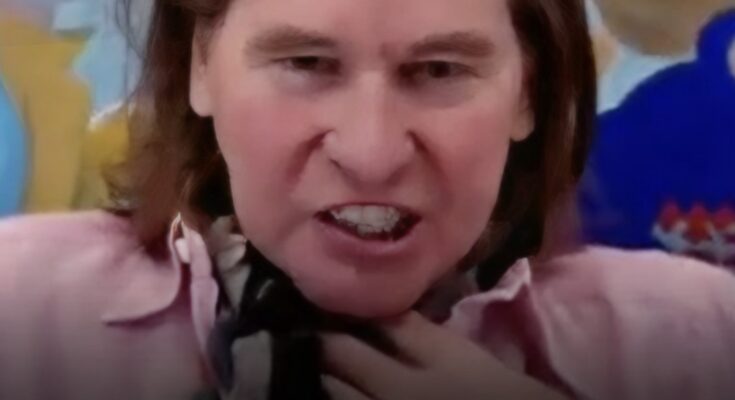For years, Val Kilmer archived hours of personal footage from his life on and off set. After losing his ability to speak, that material became essential to recreating his voice. The process required new technology and cooperation from his closest collaborators.
Val Kilmer’s voice played a defining role in his most memorable performances. Whether singing as Jim Morrison or delivering sharp dialogue as Doc Holliday, his voice was measured, expressive, and unmistakable. Its range and intensity helped define who he was on screen. But in 2014, an illness took that ability from him.
Years later, he would take part in a project to recover what he had lost. Using old audio material and the support of those closest to him, Val helped develop a way to communicate in his own voice again without speaking at all. The process would mark a first for him, and for the technology used to make it possible.
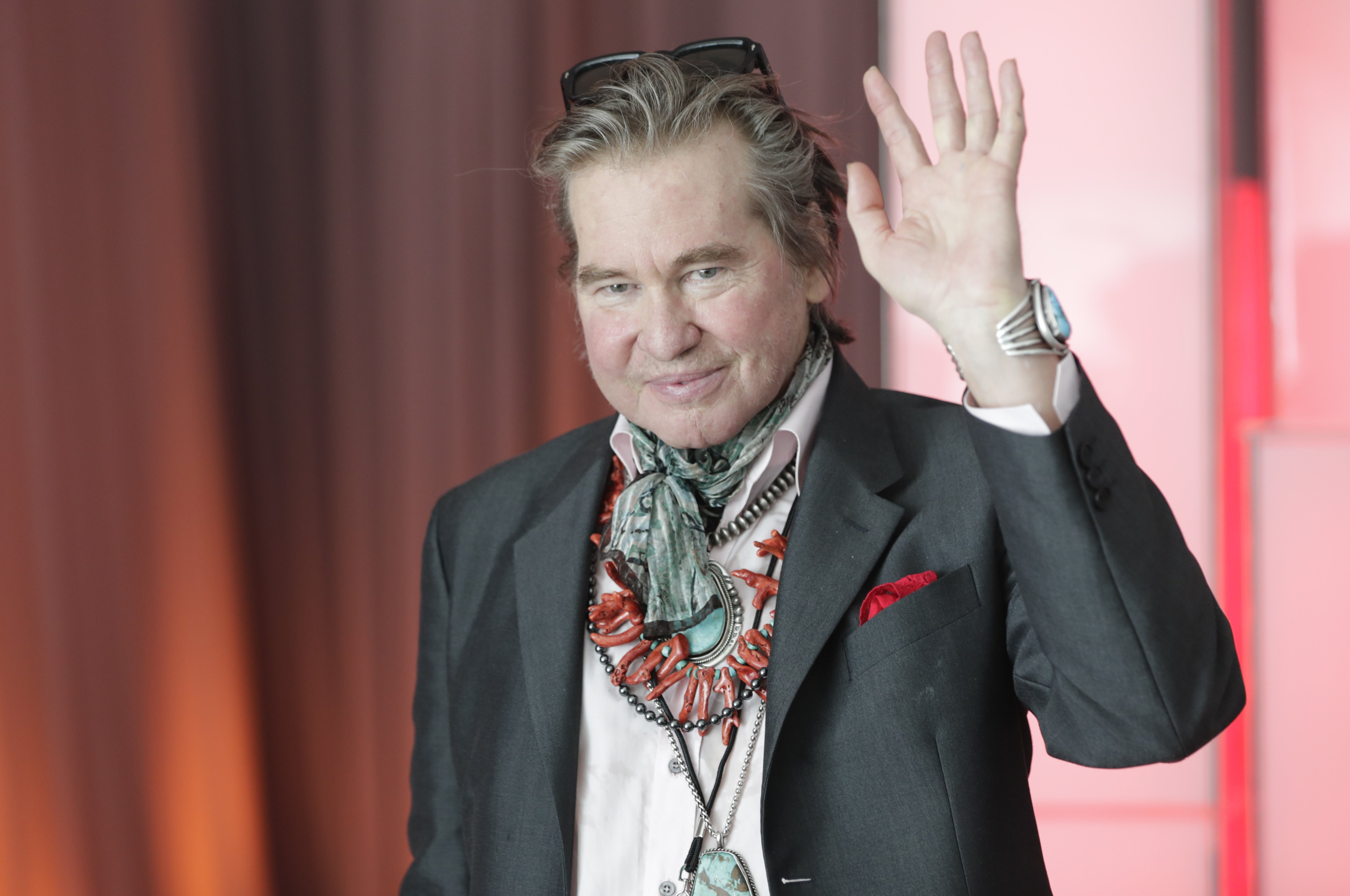
Val Kilmer at the United Nations headquarters on July 20, 2019 | Source: Getty Images
A Career Built on Voice, Film, and Family
Val was born on December 31, 1959, in Los Angeles, California. He attended Hollywood Professionals School before enrolling at the Juilliard School in New York. At just 17, he became one of the youngest students ever accepted into its Drama Division.
While at Juilliard, he and a group of classmates wrote and performed a stage adaptation of “How It All Began,” based on the autobiography of German activist Michael Baumann. After graduating, Val continued onstage and eventually transitioned to film.
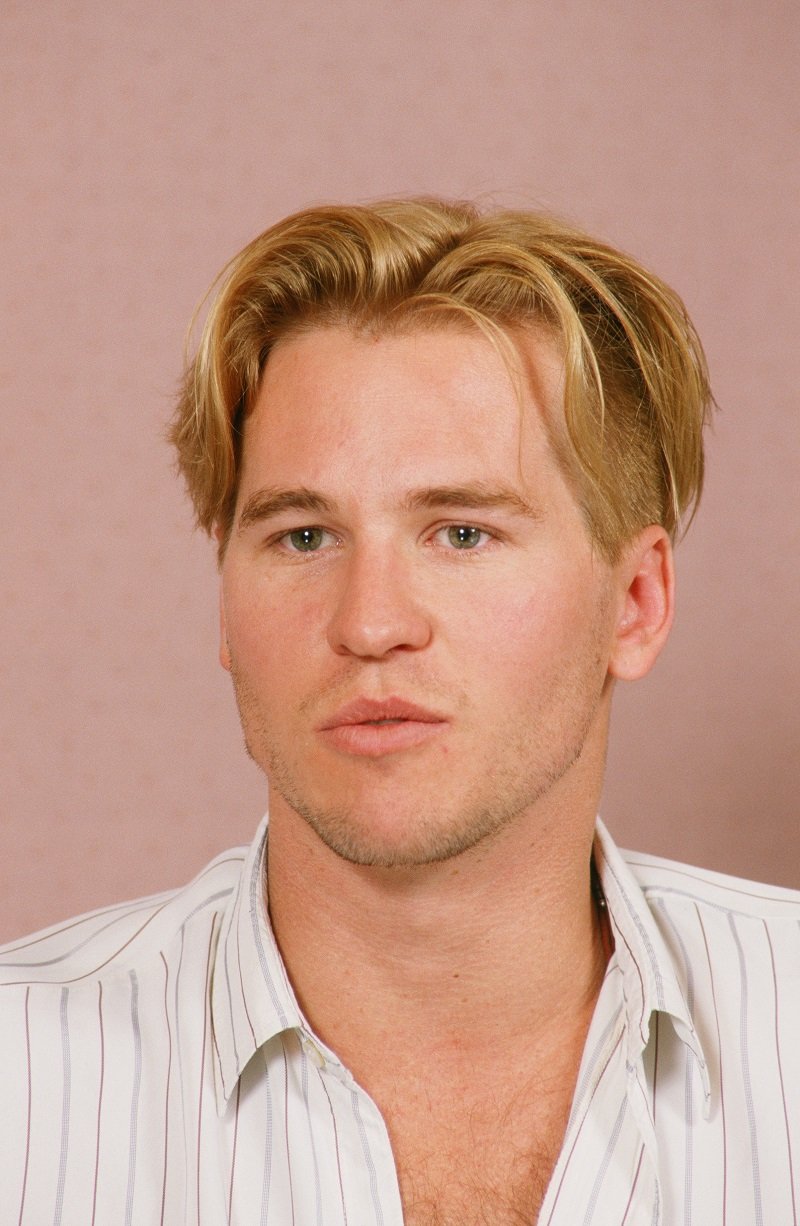
Val Kilmer in 1988 in Los Angeles, California | Photo: Getty Images
His screen debut came in the 1984 spoof “Top Secret!,” where he played a blond rock star named Nick Rivers. That same year, he became one of the first people he knew to buy a personal video camera, something that would later prove significant.
In 1986, Val found mainstream success as Iceman in “Top Gun,” a role that would follow him throughout his life. He followed it up with a role in “Willow” (1988), where he portrayed Madmartigan. While working on “Willow” in 1987, Val met actress Joanne Whalley.
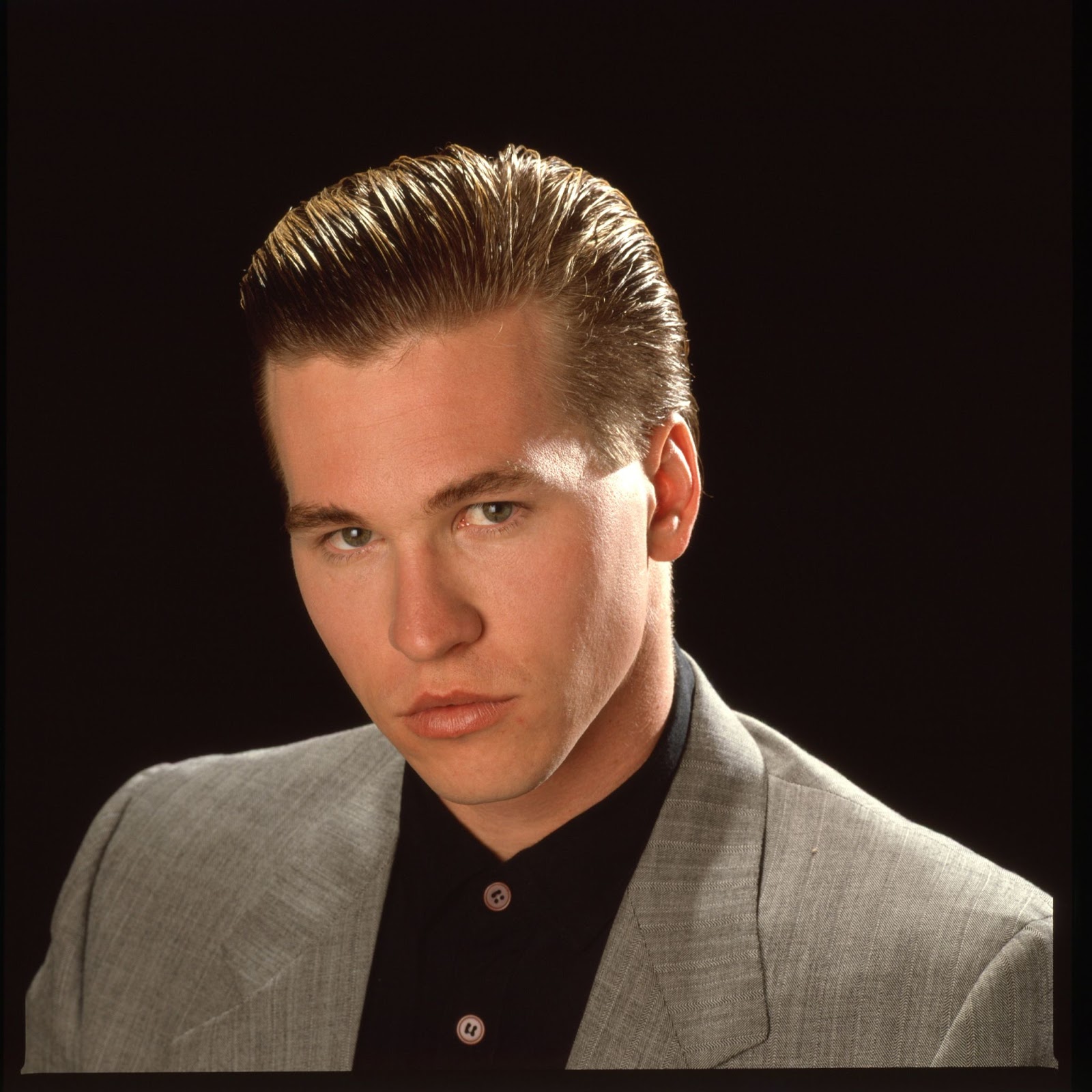
Val Kilmer during a photoshoot in Los Angeles in 1986 | Source: Getty Images
Joanne would later become his wife and the mother of his two children. They married in 1988 and had a daughter, Mercedes, and a son, Jack, before divorcing several years later. Val later described raising his children as his greatest responsibility.
“I guess I’d call my children a cause, definitely a full-time job,” he stated. Though he remained active in film, he acknowledged that his focus had shifted, adding that he was “privately very grateful” for the life he had built outside the industry.
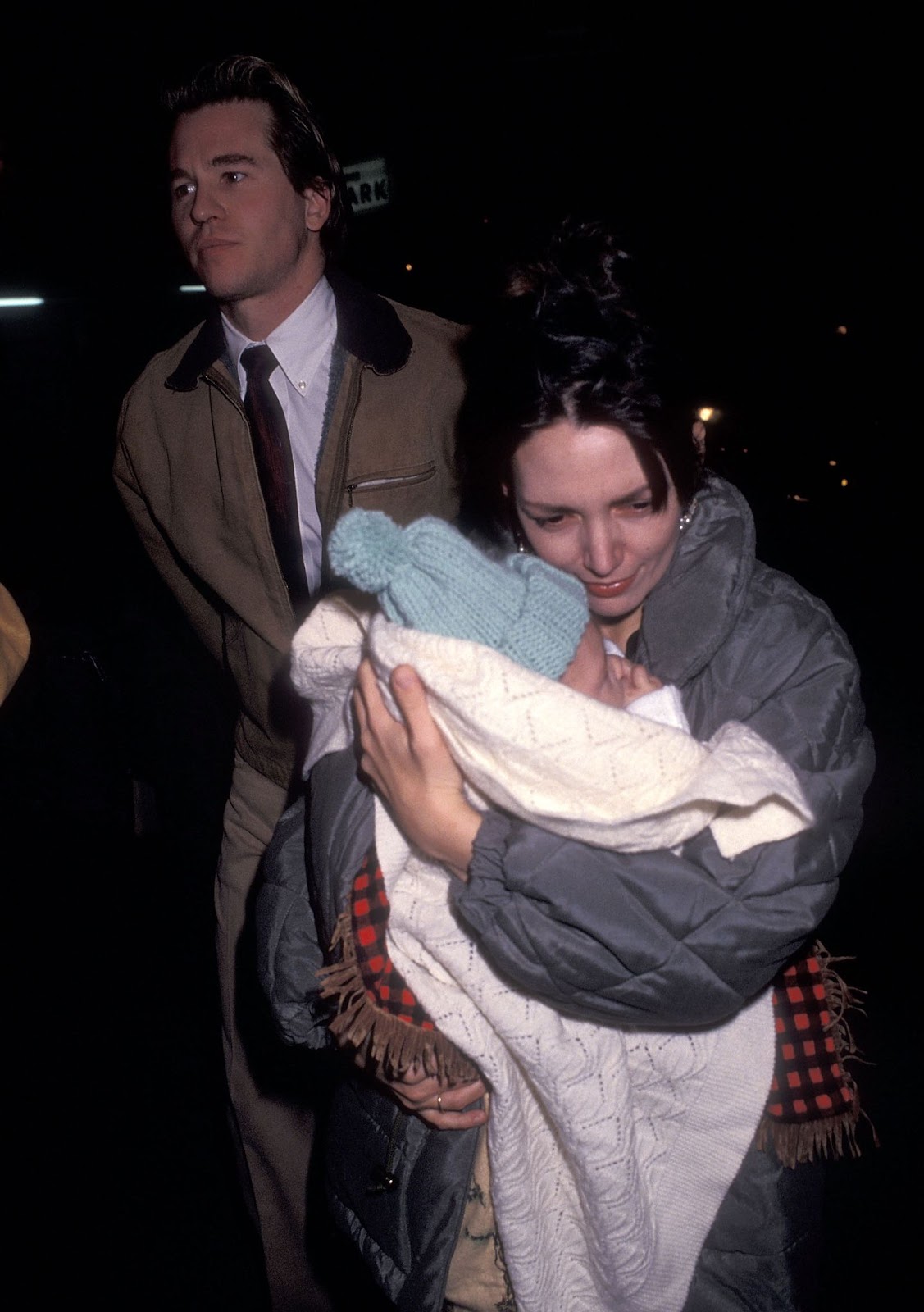
Val Kilmer and Joanne Whalley with daughter Mercedes Kilmer on February 20, 1992, in New York | Source: Getty Images
Continuing his career into the ’90s, Val played several iconic American figures, including Jim Morrison in “The Doors” (1991), Elvis Presley in “True Romance” (1993), and Doc Holliday in “Tombstone” (1993). Val’s voice was central to many of these roles. In “The Doors,” he performed all of Jim’s vocals himself.
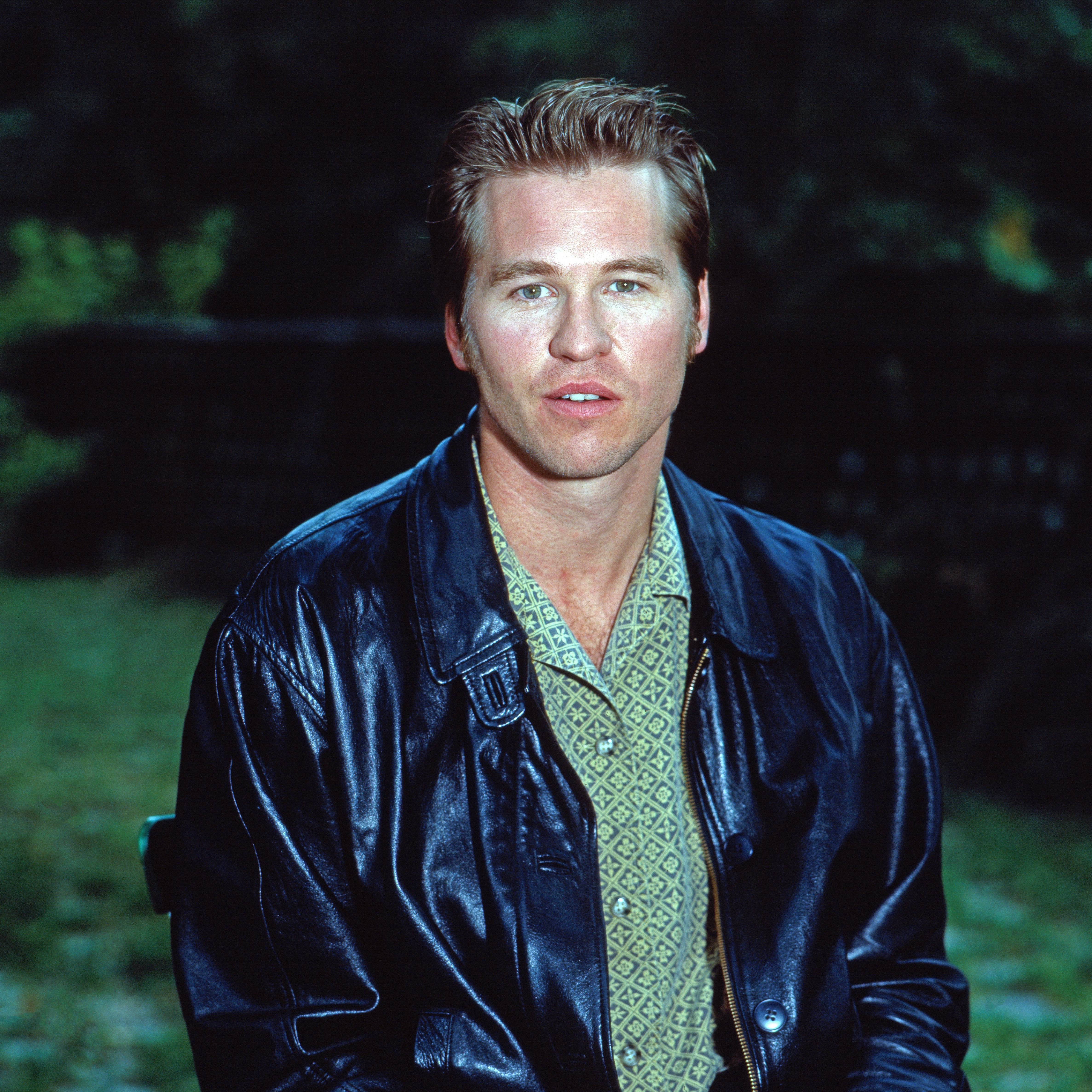
Val Kilmer during an interview in Munich in 1992 | Source: Getty Images
That same vocal strength carried into his performance as Doc Holliday, where precise delivery and tonal control were part of the character’s impact. In July 1994, it was announced that he would take over the role of Batman from Michael Keaton in “Batman Forever” (1995), cementing his status as a leading man.
In 2002, he starred in “The Salton Sea,” playing a man haunted by personal loss. Years earlier, in 1977, Val’s younger brother Wesley had drowned in a swimming pool. Reflecting on the role, Val said the grief he carried helped shape his performance.
“There are several points in the movie where the guy just can’t go on,” he said in a 2002 interview. “I didn’t really get back to earth until about two or three years after my brother died.” Outside of his film work, Val lived on a ranch near Santa Fe, New Mexico.
He preferred a life away from Hollywood and once considered running for governor of the state. By the early 2010s, Val was still working, but his health had begun to change in ways that weren’t yet public. It wouldn’t be long before he faced a diagnosis that would alter his voice, his career, and his daily life.
A Sudden Diagnosis and the Silence That Followed
In 2014, Val was diagnosed with throat cancer. The illness affected the glands in his throat, and though he chose to keep the diagnosis private at first, his condition continued to worsen. Although Val was a lifelong Christian Scientist and often spoke of faith as a guiding force, he did not avoid medical care.
As part of his treatment, he underwent chemotherapy and radiation, followed by a tracheotomy. The surgery involved creating an opening in his trachea to assist with breathing. While it helped him survive, the procedure permanently altered his ability to speak.
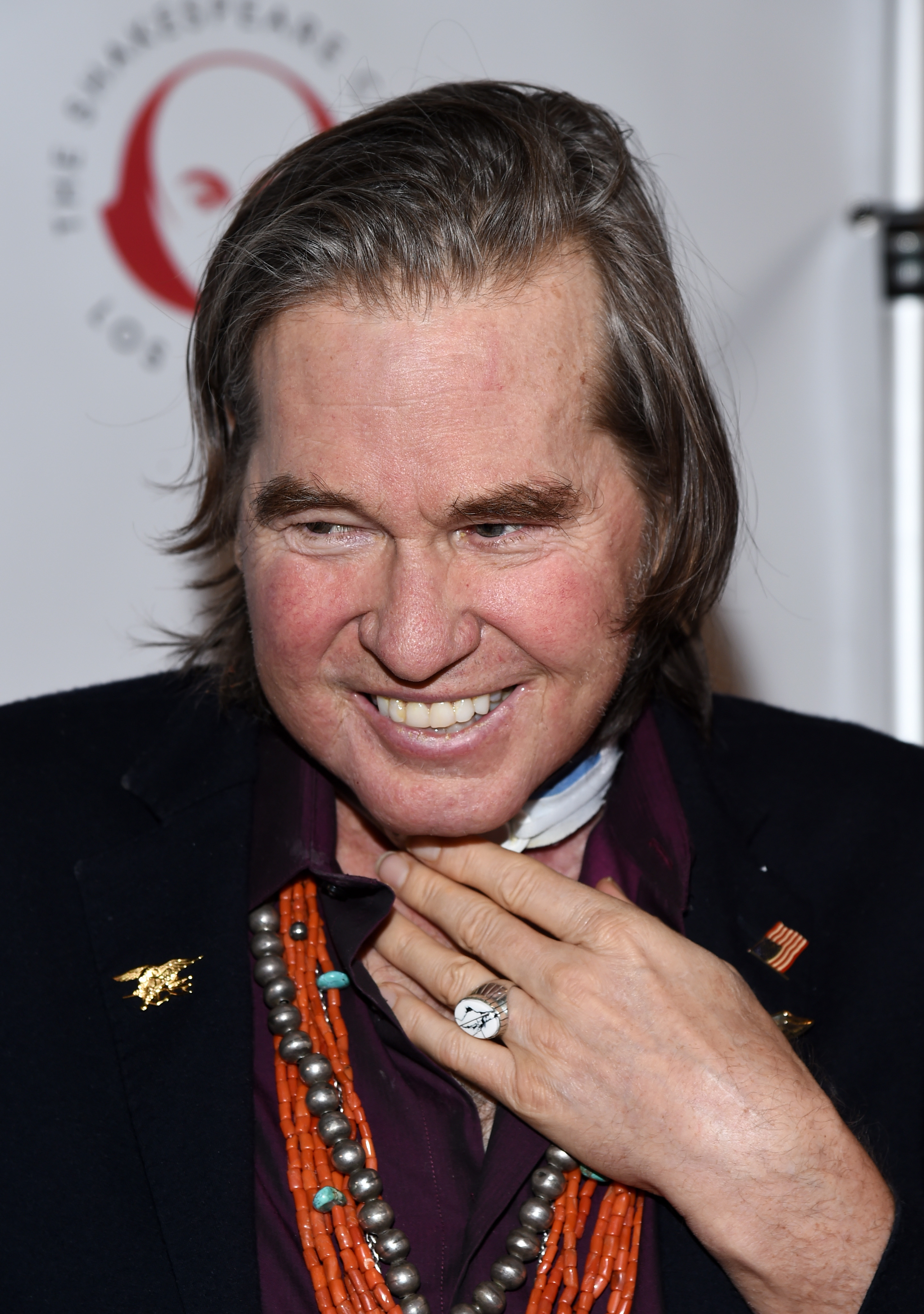
Val Kilmer at Simply Shakespeare’s Live Read of “The Merchant Of Venice” in 2019 | Source: Getty Images
Val later explained that he could only talk by plugging the hole in his throat, adding, “You have to make the choice to breathe or to eat.” Speaking required effort, and eating became difficult enough that he began using a feeding tube. The physical toll was visible, and the change in his voice was immediate.
He made a few public appearances and avoided interviews. The voice that had once defined many of his most iconic roles was no longer available to him in the same way.
Family Support and Shared Recovery
As Val was undergoing treatment for throat cancer, his daughter Mercedes faced a crisis of her own. She was struck by a car in a serious accident that left a scar down her leg. “We were in the same hospital at the same time,” Mercedes recalled.
Val’s son Jack later described the experience from his perspective. “I was just, you know, miserable, distraught, sitting next to these two,” he said. The family’s focus during that period was on healing — physically and emotionally. The circumstances brought them closer together, both as caregivers and collaborators in the years ahead.
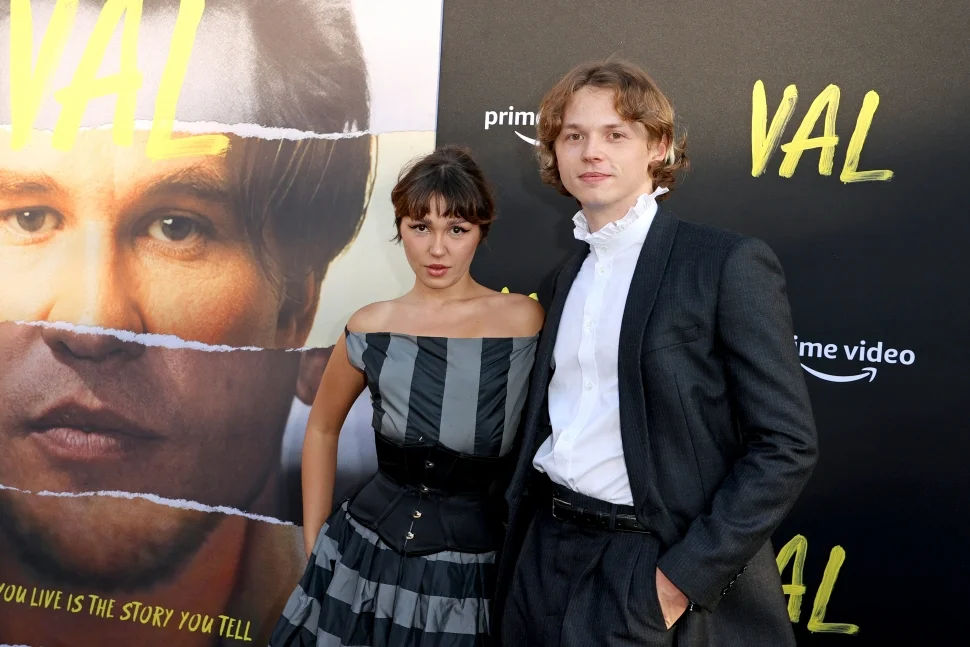
Mercedes Kilmer and Jack Kilmer attend the Premiere of Amazon Studios’ “VAL” at DGA Theater Complex on August 03, 2021 in Los Angeles, California. | Source: Getty Images
In the years that followed, Mercedes and Jack remained closely involved in Val’s life, offering steady support as he adjusted to the lasting effects of his treatment. Though his voice had changed permanently, Val had not withdrawn from public life entirely. By 2020, he was preparing to speak again.
Memoir and First Public Statements
Val publicly addressed his condition in April 2020, during an interview with “Good Morning America” — his first television interview in nearly a decade. He was promoting his memoir, “I’m Your Huckleberry,” which offered a detailed look into his life and career.
Speaking softly and with a strained voice, he addressed how cancer had affected him. “I feel a lot better than I sound,” he said during the interview with Chris Connelly. When asked what he missed most about his former voice, he answered without hesitation, “That I had one! That I didn’t laugh like a pirate.”
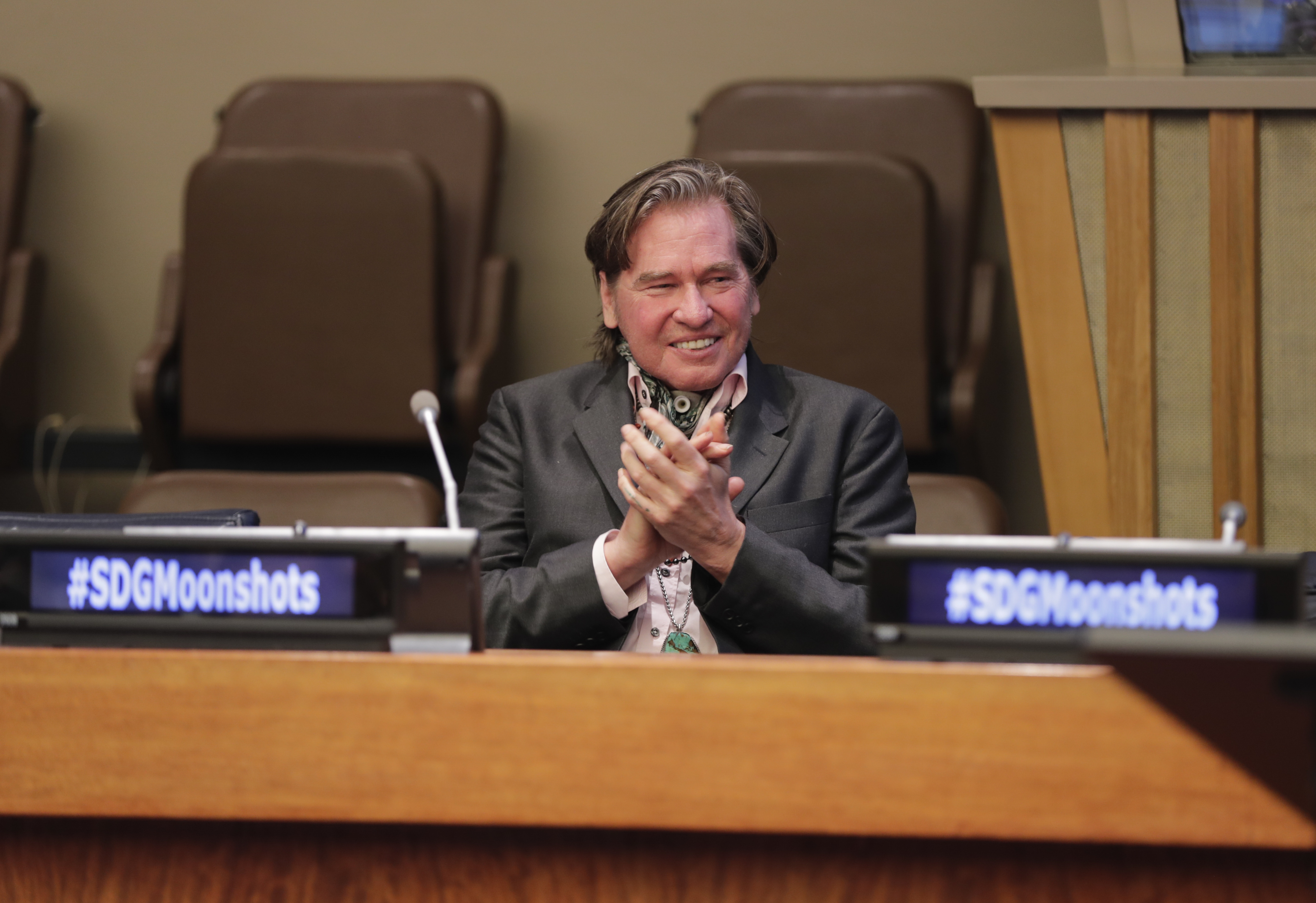
Val Kilmer visits the United Nations headquarters in New York City on July 20, 2019 | Source: Getty Images
Ahead of the interview, Val had shared a message on Instagram. “This will be my first television interview in nearly 10 years and the first since being diagnosed and healed from throat cancer,” he wrote. “We’re going to talk about my new book and some of the most memorable and difficult moments throughout my life.”
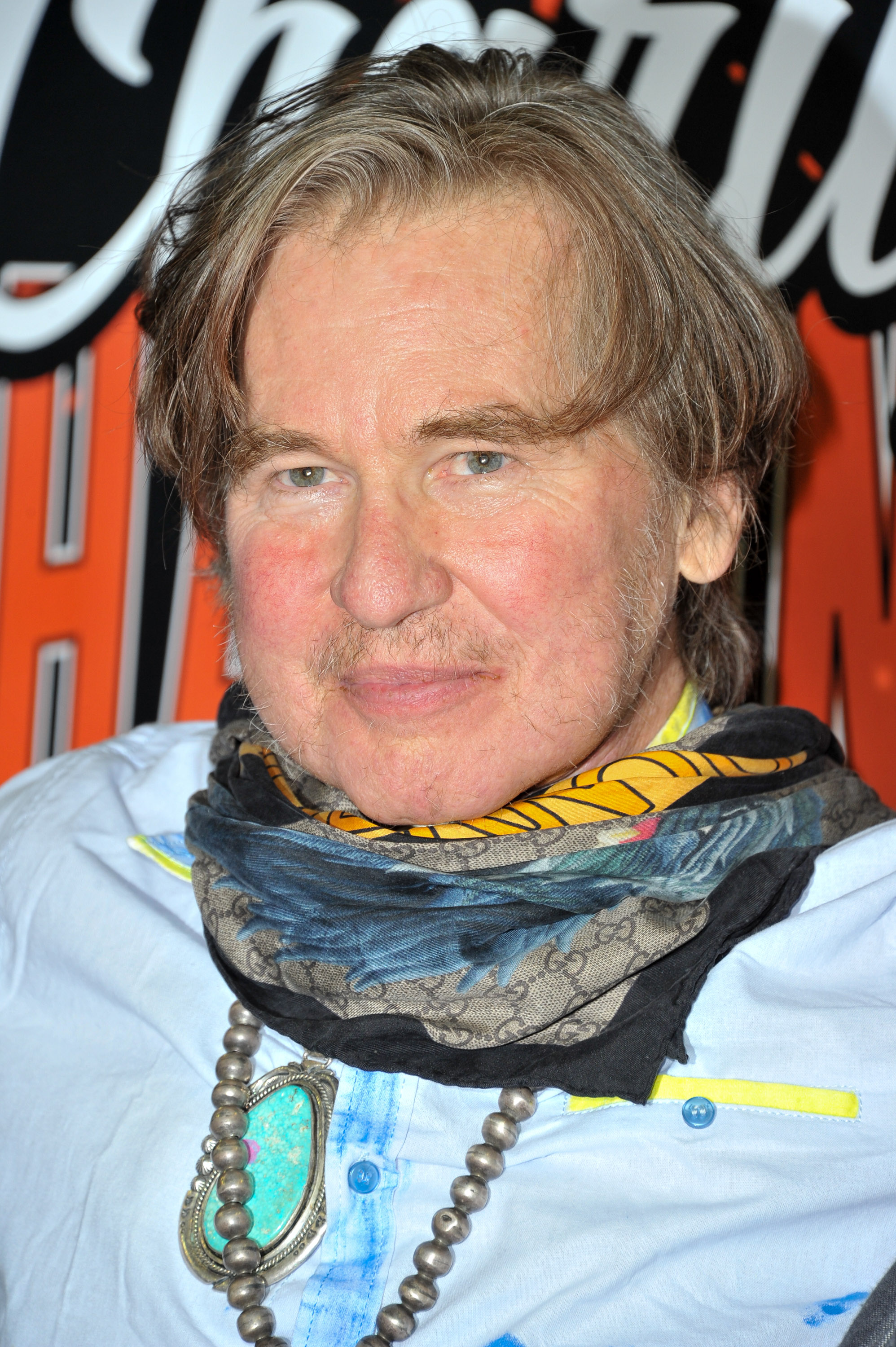
Val Kilmer at UCLA’s Pauley Pavilion on July 8, 2019, in Westwood, California | Source: Getty Images
He added, “Though being healed from cancer, I am slowly and surely regaining my speech. I haven’t let the adversity stifle my voice as an artist.” The memoir itself was personal and reflective. In it, Val wrote about his childhood in California, his early rise to fame, his experiences on film sets, and his beliefs as a Christian Scientist.
He addressed his health with honesty and his usual dry humor, offering readers a rare view into how he was coping. The book gave him a platform at a time when speaking aloud had become a challenge, and marked the beginning of his re-entry into public life.
His next project would take that effort even further, using not just his memories, but the massive archive of footage he had quietly collected over the course of his career.
A Life on Tape Becomes a Film: The Making of ‘Val’
For decades, Val had been filming his life, collecting thousands of hours of footage — everything from behind-the-scenes clips on movie sets to moments at home. That archive became the foundation for his next major work: the Amazon Original documentary “Val.”
Directed by Leo Scott and Ting Poo, the film was co-produced by Val along with his children, Jack and Mercedes. The team spent months combing through his tapes, organizing them into a narrative that captured the full range of his life and career.
The result was an intimate portrait built largely from Val’s own camera work — raw, unfiltered, and personal. Because of Val’s difficulty speaking, most of the film’s narration was delivered by Jack, who read his father’s words.
“Now that it’s more difficult to speak, I want to tell my story more than ever,” Val said. In another moment, he added, “It’s an obstacle that is very present with whoever sees me,” referring to the visible impact of his tracheotomy.
“Val” premiered in 2021 and received a standing ovation at the Cannes Film Festival. The documentary was the first project where his children played a direct role in helping him shape his story for the public.
But even with the film complete, Val still faced the daily challenge of not being able to speak clearly. That would soon change with the help of a small voice technology company based in the United Kingdom.
Reclaiming a Voice Through Technology
After completing work on the documentary “Val,” a new opportunity began to take shape. In December 2020, Val’s team reached out to Sonantic, a voice technology company based in the United Kingdom. The request was unusual: they wanted help recreating Val’s voice.
At that point, Val’s voice was no longer strong enough to carry full conversations, and he wanted a way to express himself more clearly. Sonantic, a company that builds AI-generated voices for actors and video games, took on the project.
Zeena Qureshi, the company’s CEO and co-founder, revealed, “Val’s team wanted to give him his voice back so that he could continue creating.” Unlike other projects Sonantic had worked on, Val couldn’t record new material. The team had to rely entirely on past recordings, many of them low in quality or buried under background noise.
There were also copyright issues, limiting what could be used from his films. In total, they had only about one-tenth of the usual amount of clean audio typically required to build a model. The team developed new algorithms to clean and process the available recordings.
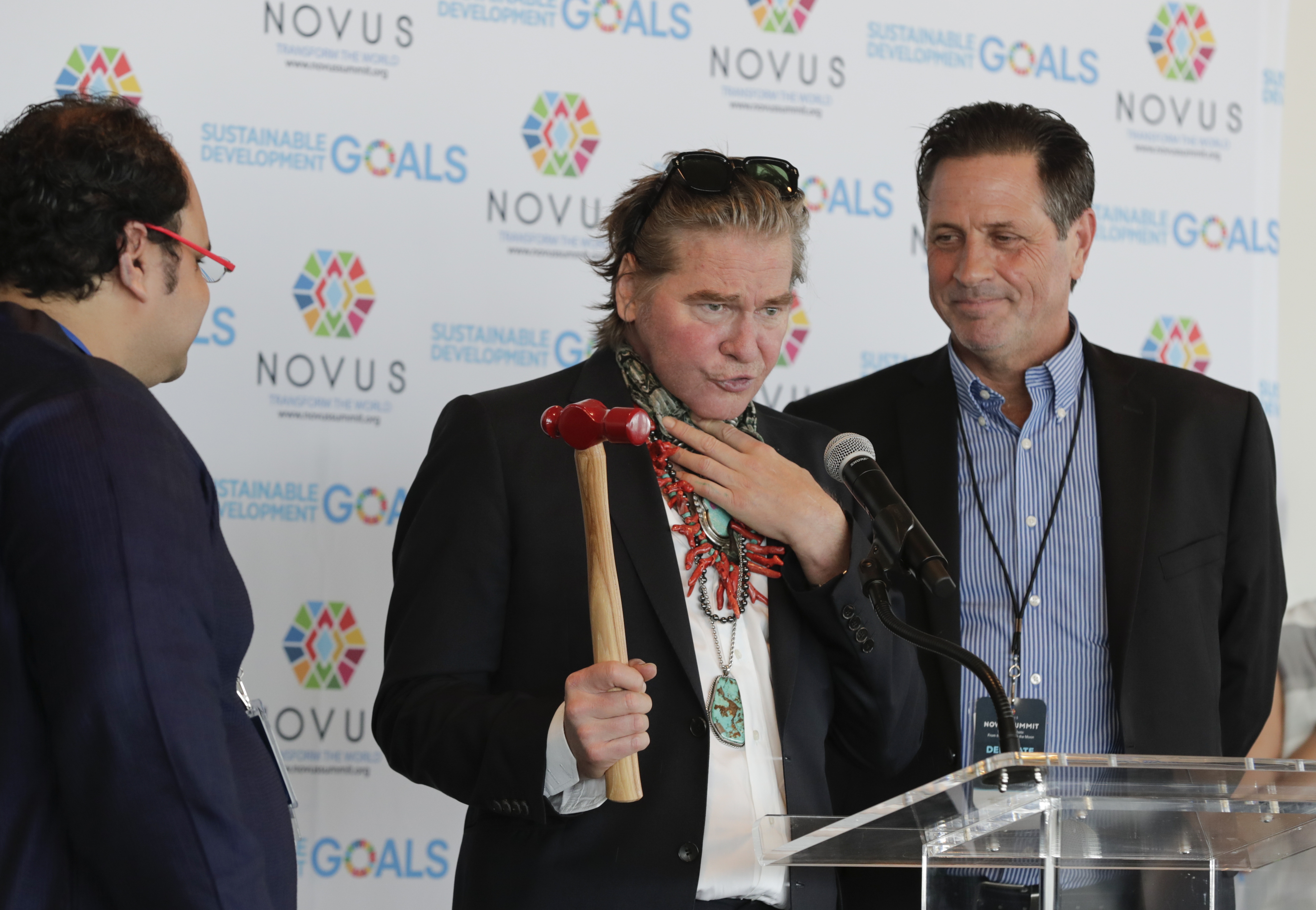
Val Kilmer speaking at the United Nations headquarters in New York on July 20, 2019 | Source: Getty Images
They built several versions of the voice, each refined to match Val’s original tone, rhythm, and emotional range. The final product was operated using a desktop application. Val could type what he wanted to say, then adjust pitch, pacing, and delivery. In 2021, Sonantic released a short video demonstrating the AI-generated voice.
In it, Val’s recreated voice was heard saying, “After getting treated, my voice as I knew it was taken away from me[…’ But despite all that, I still feel like the exact same person — still the same creative soul[…] But now I can express myself again.” The message also reflected on creativity and communication.
“When we think of the most talented, creative people, they speak to us in a unique way. A phrase we often hear is ‘having a creative voice,'” he continues. “But I was struck by throat cancer[…] Now I can show you this part of myself once more—a part that was never truly gone. Just hiding away.”
Not long after the release of his AI-generated voice, Val returned to the screen one final time in a role that brought his career full circle.
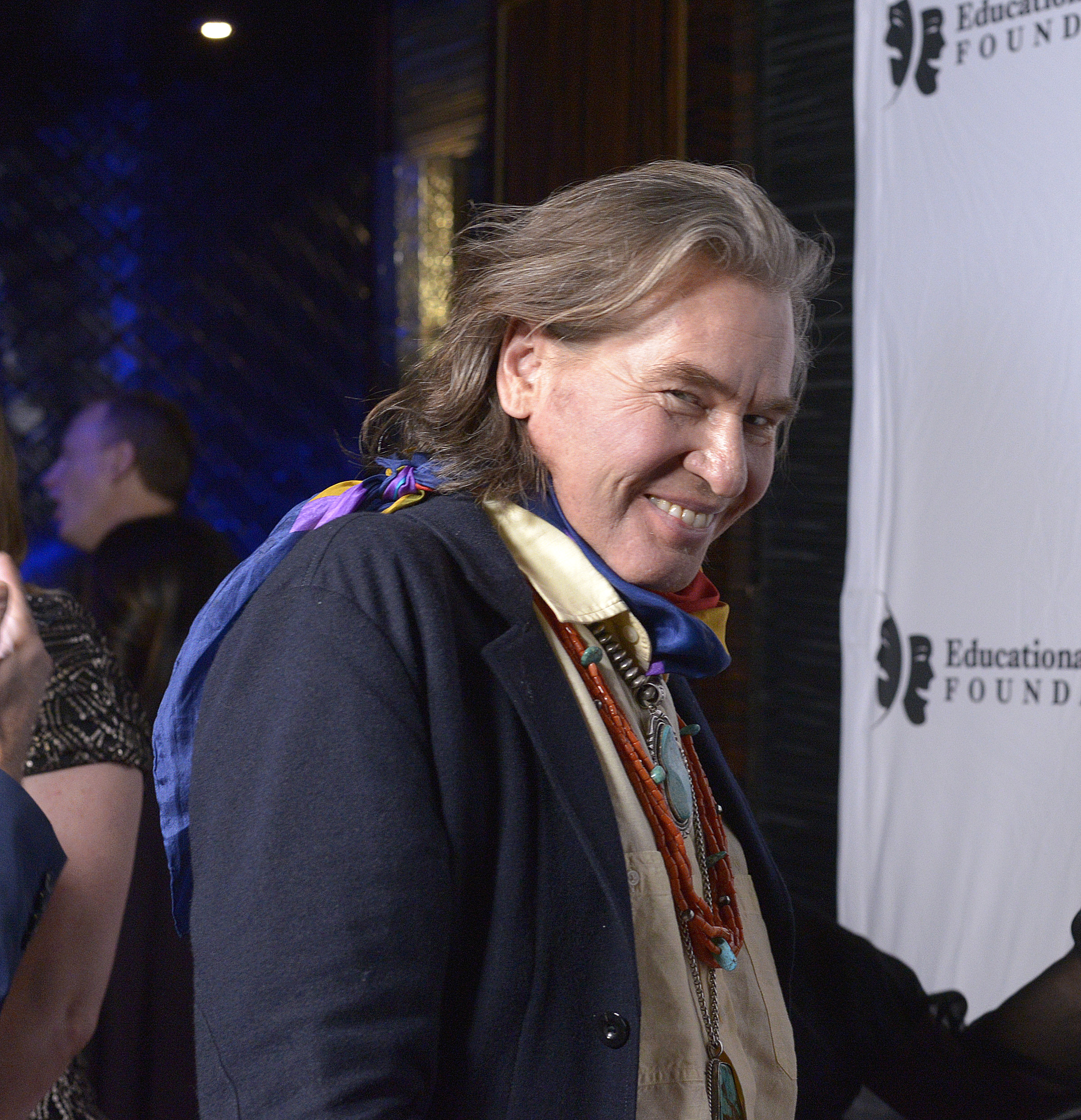
Val Kilmer attends the 2019 annual Thespians Go Hollywood Gala at Avalon Hollywood on November 18, 2019 | Source: Getty Images
From His Final Scene to His Final Days
In 2022, Val appeared once again as Iceman in “Top Gun: Maverick,” reuniting with Tom Cruise more than 35 years after the original film. The role was brief but meaningful. His character, like Val himself, had lost the ability to speak and communicated primarily through text on a screen.
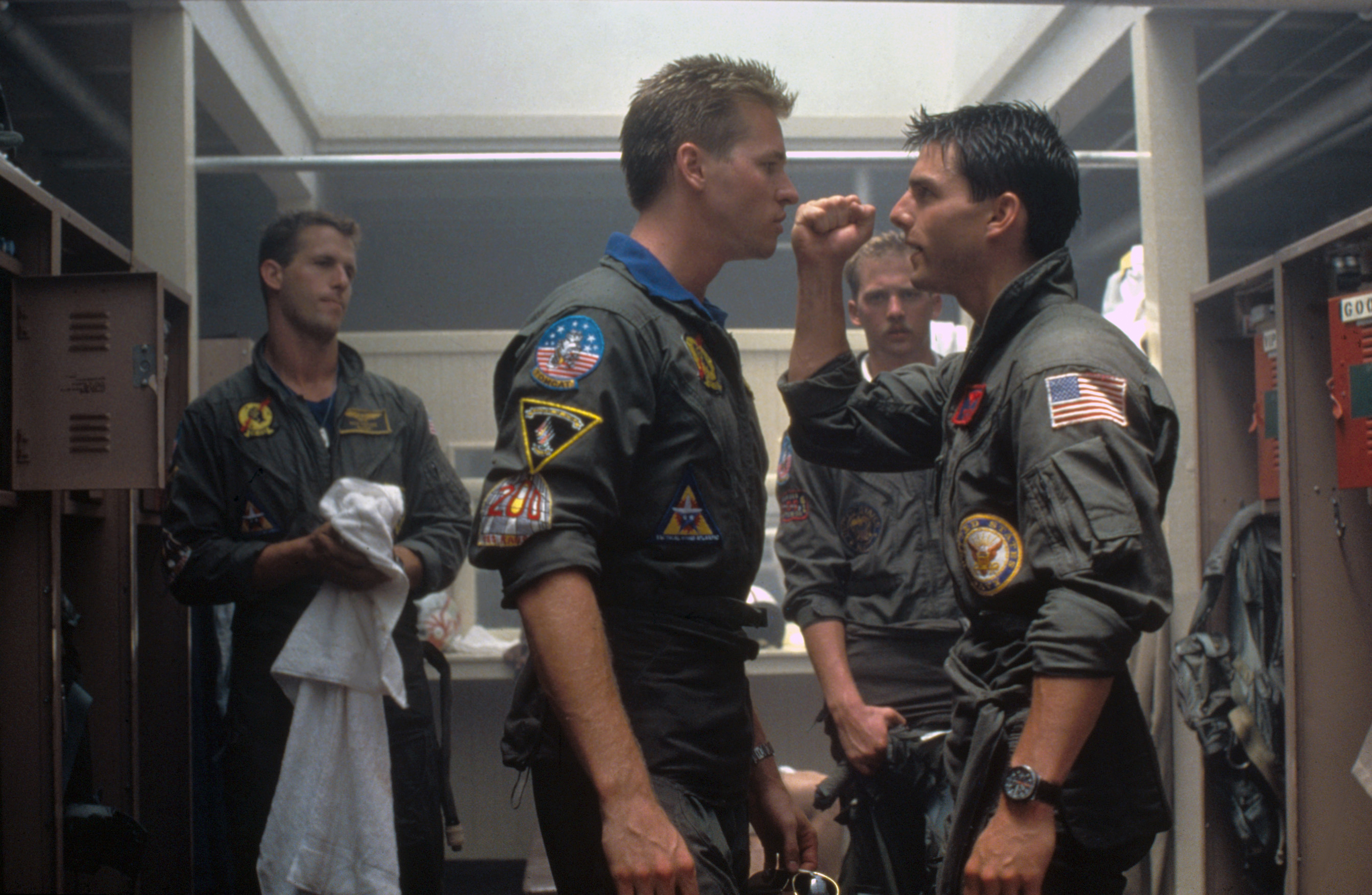
Val Kilmer and Tom Cruise on the set of “Top Gun,” directed by Tony Scott, circa 1986 | Source: Getty Images
The moment was widely praised for its authenticity and emotional weight. It was Val’s final appearance in a major film. In the years after filming, Val continued to live near Santa Fe, New Mexico, where he had spent much of his life.
He remained active in writing and creative projects, supported by his children, Jack and Mercedes, and focused on his personal archive and land preservation efforts. On April 1, 2025, Val Kilmer died in Los Angeles at the age of 65. His daughter Mercedes confirmed the news, stating that the cause of death was pneumonia.
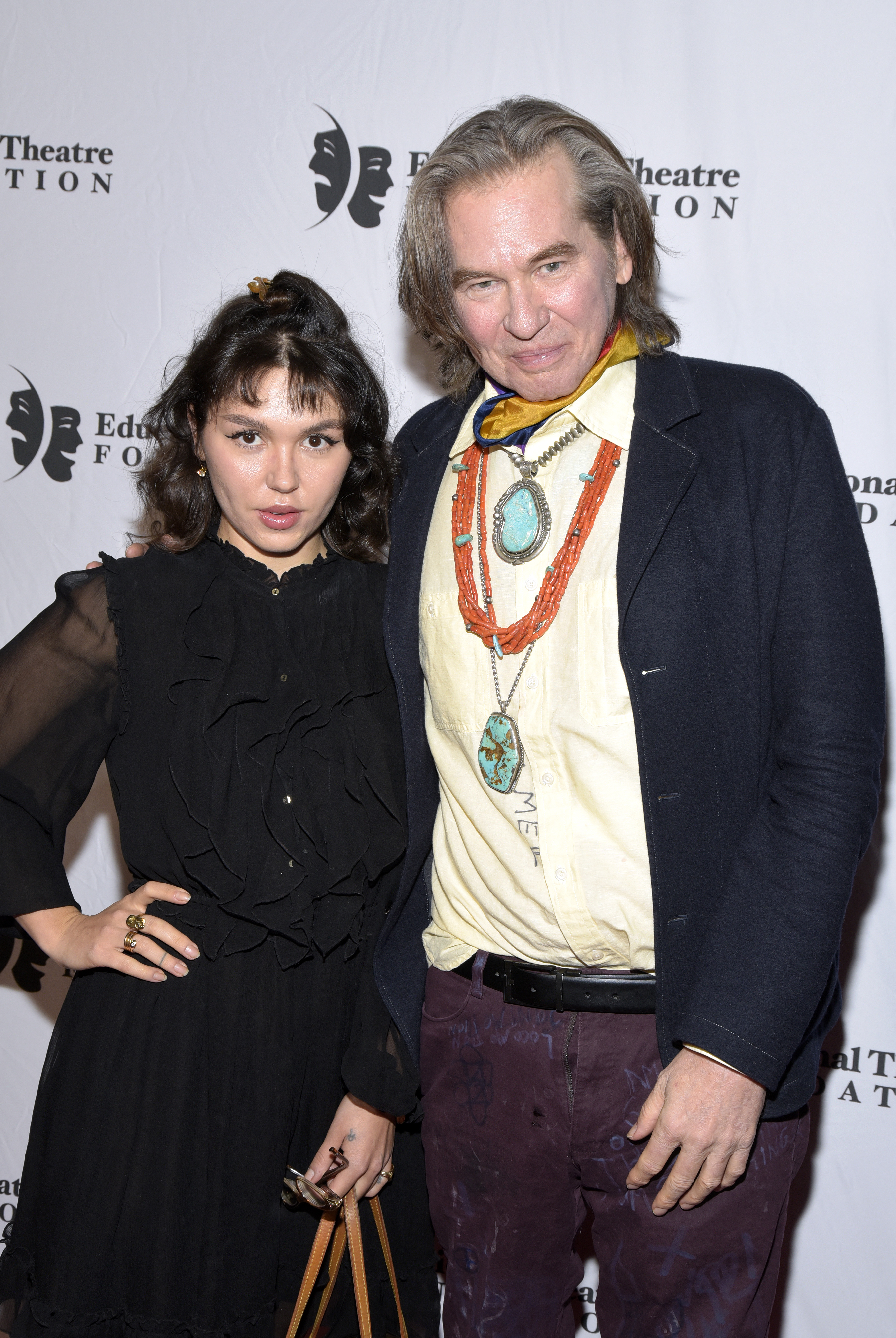
Val and Mercedes Kilmer at the 2019 Annual Thespians Go Hollywood Gala on November 18, 2019 | Source: Getty Images
She also noted that Val had recovered from throat cancer years earlier, but his health had remained fragile since the surgery that changed his ability to speak. Though Val’s voice had been silenced by illness, his words, films, and family helped ensure he was never unheard.
Through innovation, persistence, and the support of those closest to him, Val found a way to keep telling his story even after the voice that once defined him was gone.
